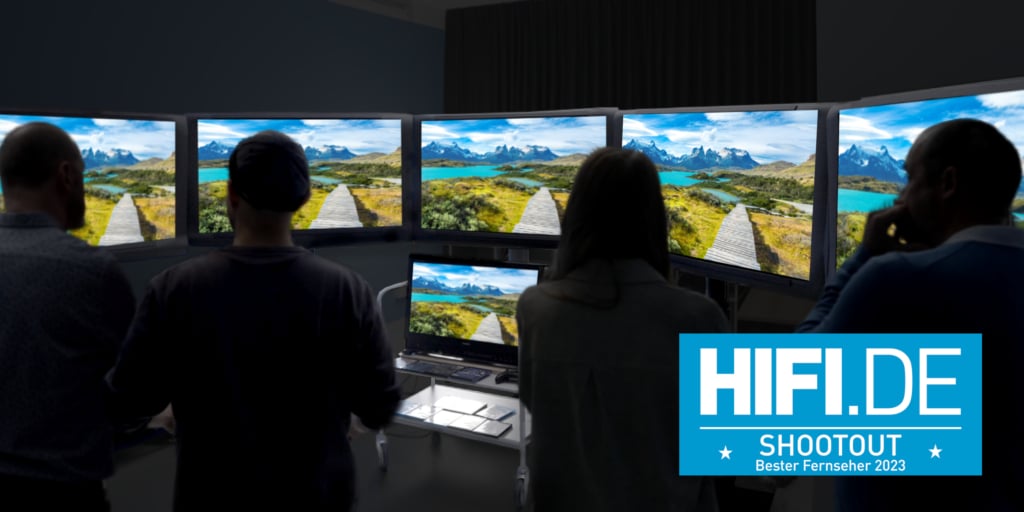I've been looking at OLED with interest ever since it first hit the market. I love the concept, but so far I've been uhappy with what I see, and it mostly comes down to brightness issues, ABL and ASBL. With all the consensus that OLEDs have the best picture, I'm glad to see that this issue is recognized on rtings and other review sites as something that some people find highly bothersome. It's amazing to me that some people are baffled about it, seem to not see it hardly at all, and don't know what some of us are complaining about. I'm just glad there are other options available for those of us who can see that issue clearly. I like to watch in a dim room, but not a dark room. My TV can do a real 650 nits, full screen sustained. That's what real means to me. Having partial screen areas get increasingly brighter as they get smaller is not at all accurate. From what I can see, OLED can do just a bit over 200 nits without getting into dynamic trickery. If I had an OLED, I'd be looking for a way to limit peak brightness at any screen size to 200 nits to prevent the ABL and ASBL from kicking in. I might go a little higher than that. I'd have to experiment to see how much I can tolerate. That would require a very dim viewing environment to achieve a dynamic look. The infinitely deep blacks are next to worthless to my eye. There's really nothing I want to look at that has no illumination at all, or is viewed against a jet black background. What about saturation in darker areas? Well it looks very unnatural to me the way these TVs present it, including my mini LED TV. Saturation should appear lower at lower intensity. That's what I see in the real world. Not sure why I see so much garish color in the shadows on video content. I suspect it is largely the fault of choices made by content creators, but the natural washout from LCD light bleed often helps it look more natural. Better to fade gracefully into a higher noise floor than flail into an infinitely deep abyss. I turned local dimming to low on my TV. Blacks aren't as deep and that's just fine by me. Nothing good to see in those deep blacks. This may have something to do with my vision as well, because I don't have unusually high visual acuity, but the one area I tested very well in when I was applying for the Air Force acadamy was sensing subtle color patterns in low light. The doc. said he'd had very few people recognize all the patterns at the lowest light levels, and I did it very quickly. So, whatever that's worth, maybe I have unusual vision.
Having tested good for low light color pattern perception, I also seem to be highly tolerant of bright light. I generally don't feel the need to wear sunglasses unless I'm forced to look at glaring sunlight reflections off water or vehicles or very bright terrain. Out in the woods on a sunny day I just wear them now to protect my lenses from UV. I call sunglasses gloomers. They can make a sunny day look a little gloomier. Some I got recently claim to have some kind of contrast enhancing effect. It seems to work. They give a sunny day a sort of OLED look. When I take them off eveything looks bright and relatively washed out. Reality! I prefer it. One area OLEDs excel at is recreating the look of LED christmas lighting I see on my night walks. LEDs can look like LEDs! They do a great job of that, and simulating other artificial light sources at night. Natural, diffuse lighting, not so much for me. Some say that TVs are already way brighter than they need to be. I totally disagree. I'd love to have a 10,000 nit capable screen - 100 percent screen area, sustained. For reference, vision damage starts in the range of 250,000 nits. So 10,000 nits would be equivalent to listening to the stereo at a very safe level, but turned up loud enough so you can really hear it at its best. I don't expect to ever have a TV this bright and don't even want one unless some amazing technology comes out to greatly increase the energy efficiency. I don't want to be pulling too many watts out of the wall just to watch TV. What I do think may be available at some point is a display that can do maybe 1500 nits with no more energy requirement than my current TV, and have higher native contrast and some of the other benefits of current OLED technology. I'm hoping direct emmisive tech. continues to improve. There are experimental technologies that have been demonstrated that may in a few years allow us to leave this mini LED and OLED tech. behind us.
For now I'm really happy with my mini LED. Its strengths are quite pleasing and its weaknesses are highly tolerable.

